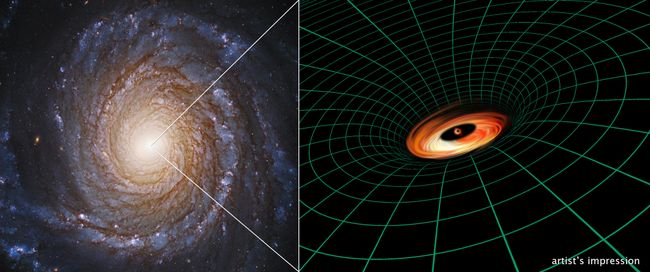Surprise! This Monster Black Hole's Disk Shouldn't Exist
By Passant Rabie 15 hours ago Science & Astronomy
Hubble observed this unexpected pairing at the center of a spiral galaxy.
Astronomers have discovered a thin disk of material spiraling into a supermassive black hole in a very faint galaxy — an unexpected finding that may provide further clues to the dynamic processes surrounding black holes.
Using the Hubble Space Telescope, astronomers observed the black hole at the center of the spiral galaxy NGC 3147, which is located around 130 million light-years away in the Draco constellation. Black holes in low-luminosity galaxies like NGC 3147 usually lack sufficient material captured by the galaxy's gravity to feed off of, and are therefore considered "starving," Hubble scientists said in a statement.
The researchers were surprised to find a thin disk encircling the black hole at the center of this galaxy, because the disk looks similar to the kinds of accretion disks that typically encircle black holes found in extremely active (and much brighter) galaxies.

This Hubble Space Telescope image of the spiral galaxy NGC 3147 (left) is shown next to an artist's illustration of the supermassive black hole residing at the galaxy’s core.
(Image credit: Hubble Image: NASA, ESA, S. Bianchi (Università degli Studi Roma Tre University), A. Laor (Technion-Israel Institute of Technology), and M. Chiaberge (ESA, STScI, and JHU); illustration: NASA, ESA, and A. Feild and L. Hustak (STScI))
"The type of disk we see is a scaled-down quasar [a luminous galactic nucleus] that we did not expect to exist," Stefano Bianchi, an astrophysics professor at Roma Tre University in Italy and lead author of the study, said in the statement. "It's the same type of disk we see in objects that are 1,000 or even 100,000 times more luminous."
More:
https://www.space.com/black-hole-disk-should-not-exist.html?utm_source=notification
